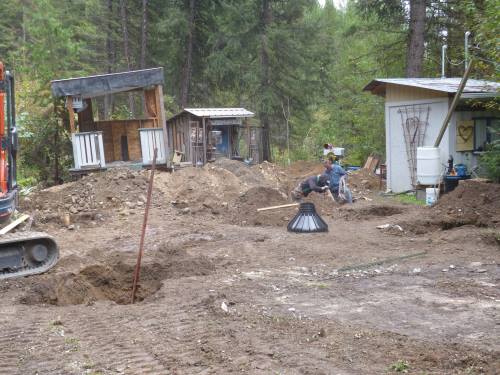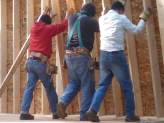- Homesteading
- Project Portfolio
- Pearls Place
- Excavation
Excavation of the Footings
A Crucial Part of the Process for building a sustainable home
A tiny footprint, a light hand on the land and something simple enough for laymen to achieve; the footings on any building are critical to get right.
The building is planned to be 21' x 32', based on the existing trusses that we had, which were meant for a shop. We kept them under cover for years, waiting for this exact moment.
The excavation of the holes for the Big Foots and Sonotube footings is a stage where the ground cannot be disturbed; one of the criteria for the building is that the soil must be either in a virgin state, or has to be compacted.
This is mandated by the building inspector - I have no idea how that works in an area that was bulldozed and flattened after a demolition. I guess they bring in the big guns, the Bowmag machines.
To avoid having to take one more step to get where we want, we decided that we had to dig each hole individually.
The mini excavator is the perfect tool;

Choosing the right tool for the job makes it all go so much easier; the right operator doesn't hurt either.
It's not essential for the operator of the machine to have the ability to pick up a single pebble with the thumb on the bucket, but it really helps. Our friend Wesley offered his services, and we gladly accepted, as we've seen his work before on other projects.
Gentlemen; start the Excavation!

Of course, it would start to rain when the excavating was started...that's fairly typical for September, especially when digging.

Mountains of mud and carefully piled gravel...although it looks chaotic, it was curated into piles of usable gravel, good clean fill, and plain soil for backfilling the holes excavated for the Big Foots.

Turn into a carefully orchestrated series of holes, complete with string lines - this is important. If the base layer is not accurate, then it gets more and more out of whack the higher the building goes.
We had to explain our thinking carefully to Wes, as he didn't realize the importance of starting with a straight, plumb foundation.
The next phase is the footings...















